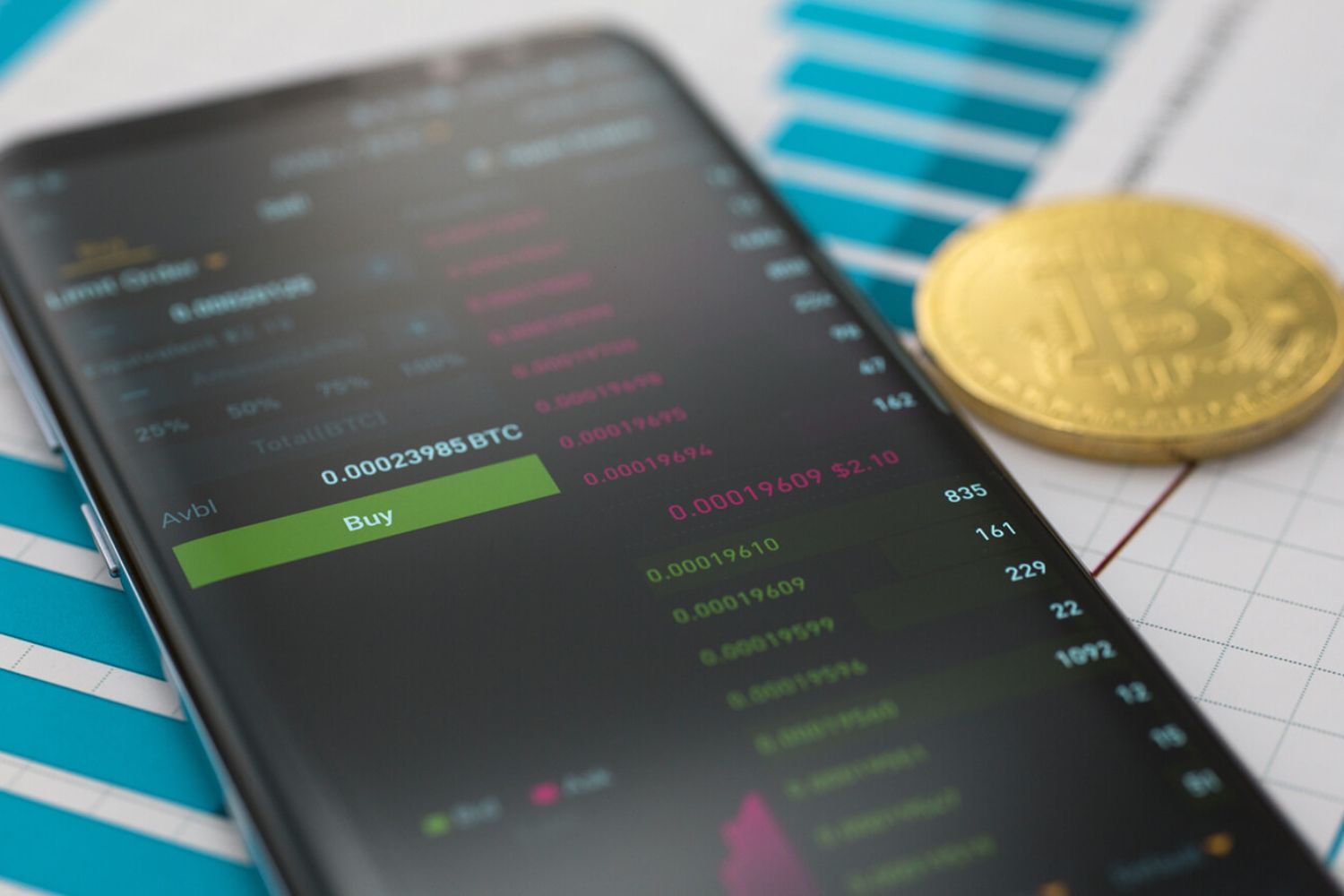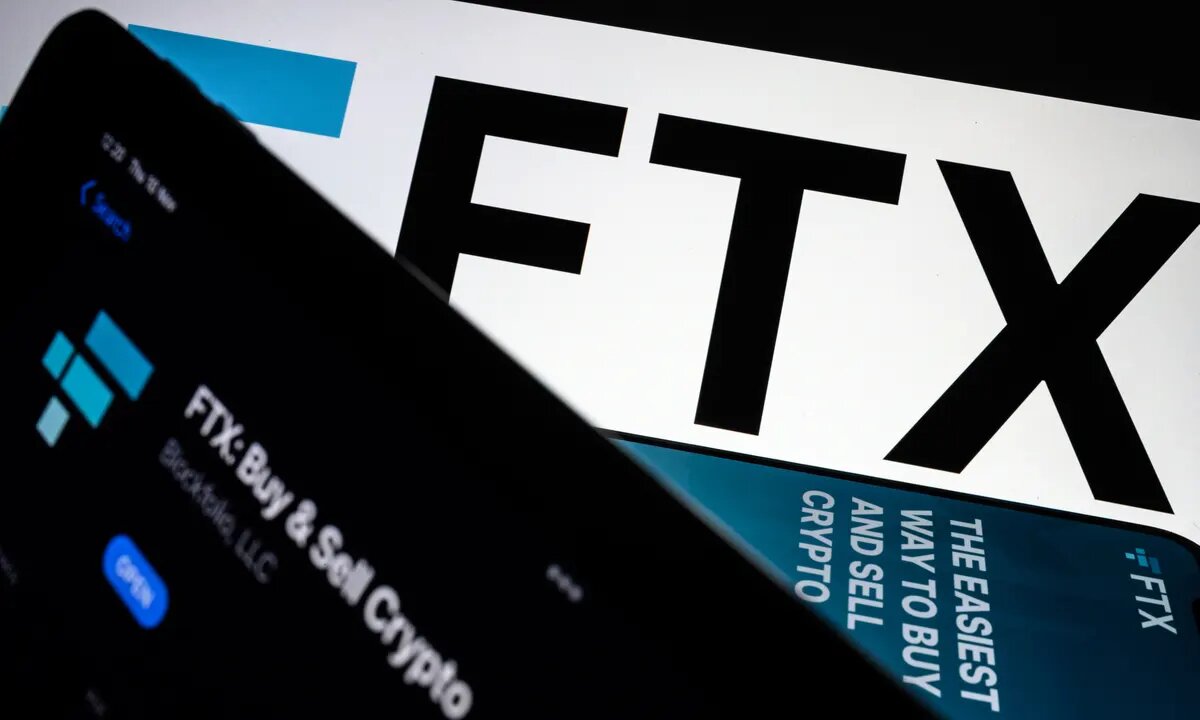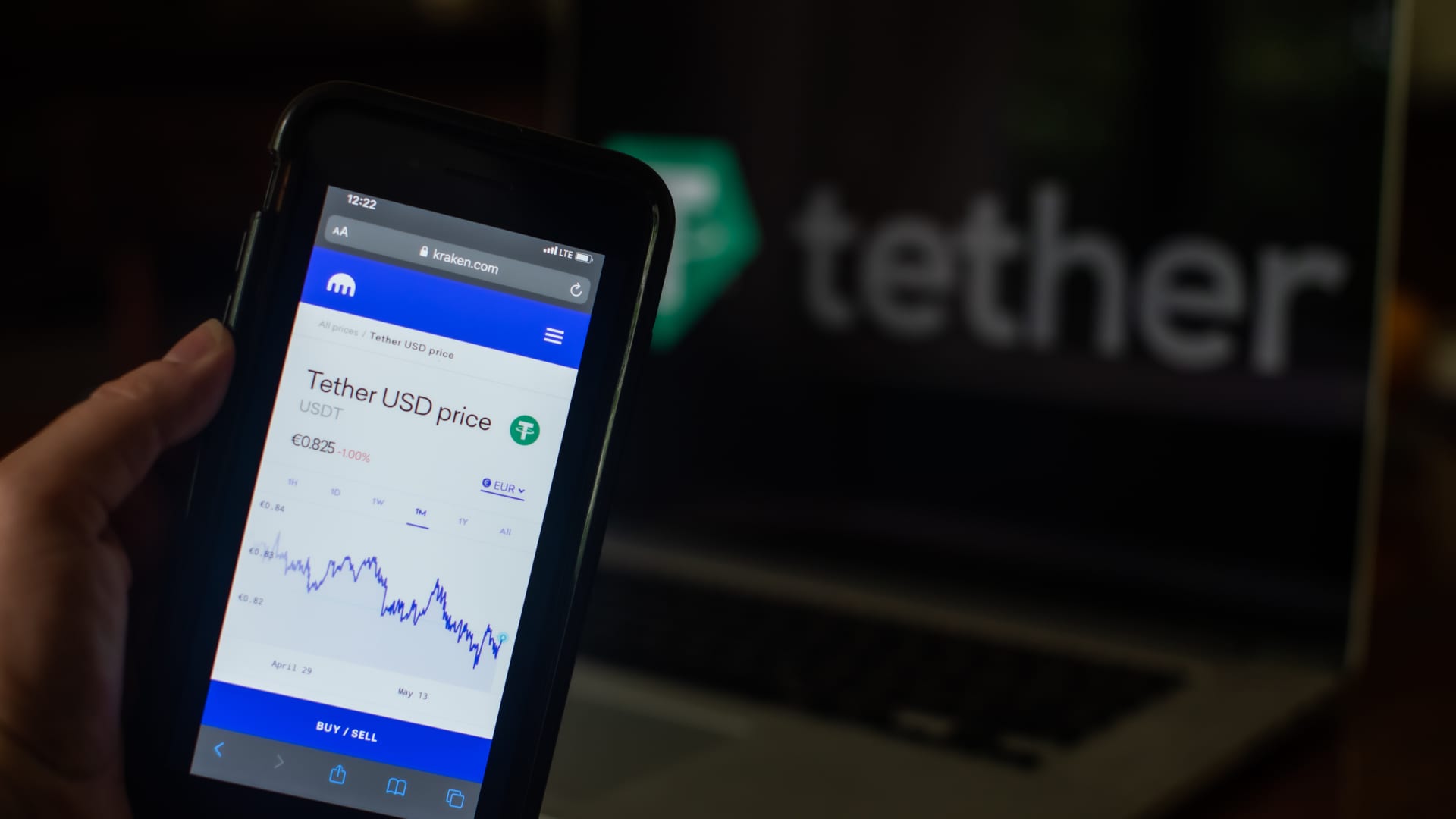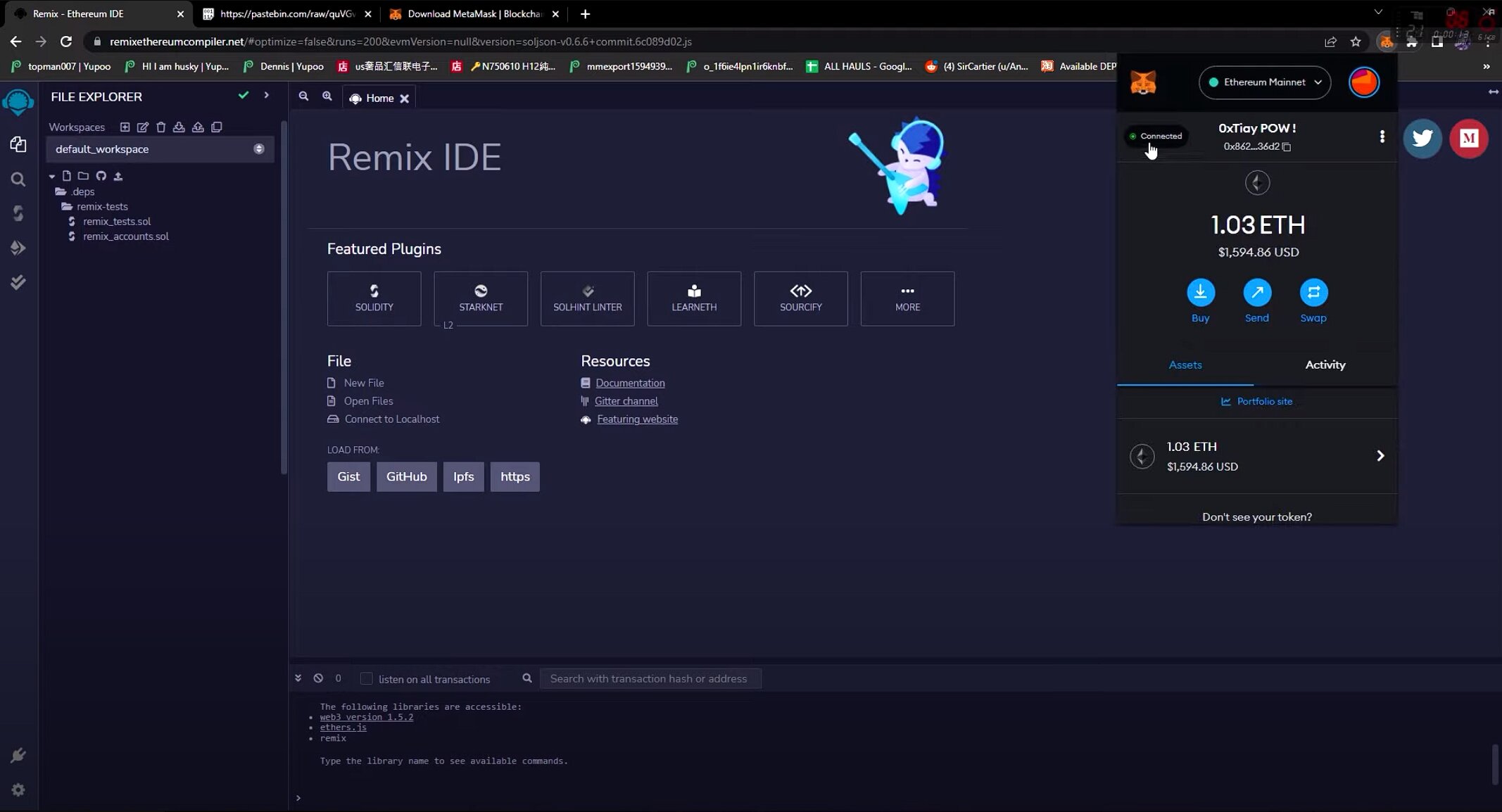Introduction
Welcome to the world of crypto exchanges! In this digital age, cryptocurrencies have emerged as a popular form of investment and transaction. Crypto exchanges play a crucial role in facilitating the buying, selling, and trading of these virtual currencies. If you’re new to the crypto space, understanding how these exchanges work is vital to navigating through the exciting realm of cryptocurrencies.
A crypto exchange is an online platform that allows users to exchange their traditional currencies or other cryptocurrencies for digital currencies like Bitcoin, Ethereum, or Litecoin. These exchanges act as intermediaries, connecting buyers and sellers and facilitating the smooth transfer of funds.
There are various types of crypto exchanges available, each offering its own unique features and functionalities. Some exchanges are designed for beginners and offer a user-friendly interface, while others cater to advanced traders and provide advanced trading tools and charts. Understanding the different types of exchanges will help you choose the one that best fits your needs.
Now, let’s dive into how these crypto exchanges actually work:
What is a Crypto Exchange?
A crypto exchange is an online platform that allows individuals to buy, sell, and trade cryptocurrencies. It serves as a digital marketplace where buyers and sellers can come together to exchange one cryptocurrency for another or convert traditional fiat currencies, such as USD or Euro, into cryptocurrencies like Bitcoin or Ethereum.
These exchanges act as intermediaries, facilitating transactions by matching buy and sell orders placed by their users. When you place an order on a crypto exchange, it is matched with someone willing to take the opposite side of the trade. Once the trade is successfully completed, the exchanged cryptocurrencies are transferred to the respective parties’ digital wallets.
Crypto exchanges provide users with a secure platform to manage their cryptocurrency holdings, track market prices, and engage in trading activities. Some exchanges also offer additional features such as margin trading, futures contracts, and lending services to cater to the more experienced traders and investors.
It’s important to note that not all crypto exchanges are the same. They can vary in terms of their user interface, features, supported cryptocurrencies, liquidity, fees, and security measures. Therefore, it is crucial to carefully evaluate different exchanges before choosing one that best suits your trading and investment needs.
Overall, crypto exchanges play a significant role in the cryptocurrency ecosystem. They provide individuals with a gateway to enter and participate in the world of digital currencies. Whether you’re an individual looking to buy Bitcoin as an investment or a seasoned trader seeking to explore various altcoins, a crypto exchange is the go-to platform for all your cryptocurrency trading needs.
Types of Crypto Exchanges
There are several types of crypto exchanges available in the market, each catering to different user preferences and trading requirements. Understanding the different types will help you select the exchange that aligns with your needs. Let’s explore some of the most common types:
- Centralized Exchanges (CEX): Centralized exchanges are the most popular and widely used type of crypto exchanges. These platforms are operated by a central entity that controls the exchange and facilitates transactions. CEXs act as intermediaries, matching buy and sell orders and executing trades. They offer user-friendly interfaces, high liquidity, and a wide range of supported cryptocurrencies. However, they require users to deposit their funds onto the exchange, which may involve some security risks.
- Decentralized Exchanges (DEX): In contrast to centralized exchanges, decentralized exchanges operate on blockchain networks and do not rely on a central authority. DEXs facilitate peer-to-peer transactions directly between users, eliminating the need for intermediaries. They offer increased privacy, security, and control over funds since users retain ownership of their private keys. However, DEXs may have lower liquidity and limited trading functionalities compared to CEXs.
- Hybrid Exchanges: Hybrid exchanges combine features of both centralized and decentralized exchanges. They aim to offer the benefits of a centralized exchange, such as high liquidity and a user-friendly interface, while also incorporating the security and privacy advantages of decentralized exchanges. Hybrid exchanges often use smart contracts to facilitate peer-to-peer trading while still allowing users to deposit funds onto the exchange.
- Brokerage Exchanges: Brokerage exchanges focus on simplicity and ease of use. They allow users to buy cryptocurrencies directly from the exchange at a fixed price. Brokerage exchanges typically don’t support advanced trading features and are ideal for beginners or individuals looking for a quick and straightforward way to invest in cryptocurrencies.
- Fiat-to-Crypto Exchanges: Fiat-to-crypto exchanges enable users to convert traditional fiat currencies, such as USD or Euro, into cryptocurrencies. These exchanges usually require users to complete a Know Your Customer (KYC) verification process to comply with regulations. Fiat-to-crypto exchanges are commonly used by individuals looking to enter the crypto market using their local currency.
- Crypto-to-Crypto Exchanges: Crypto-to-crypto exchanges specialize in trading one cryptocurrency for another. These exchanges offer a wide range of cryptocurrency pairs, allowing users to diversify their digital asset portfolio. Crypto-to-crypto exchanges are popular among experienced traders who are actively speculating and trading different cryptocurrencies.
Each type of crypto exchange has its own advantages and disadvantages. It’s important to evaluate factors such as security, liquidity, trading features, supported cryptocurrencies, fees, and user experience before choosing an exchange that aligns with your trading goals and preferences.
How do Crypto Exchanges Work?
Crypto exchanges are intricate platforms that facilitate the buying, selling, and trading of cryptocurrencies. Understanding how these exchanges work is essential for users to make informed decisions and navigate the crypto market effectively. Here’s a breakdown of the key aspects of how crypto exchanges operate:
Matching Orders: When a user places an order on a crypto exchange, either to buy or sell a specific cryptocurrency, the exchange matches that order with a corresponding order from another user. This process is facilitated by the exchange’s order matching engine, which aims to find the best match based on price, quantity, and other criteria.
Setting Prices: Cryptocurrency prices on exchanges are determined by the supply and demand factors of the market. The exchange aggregates the buy and sell orders from its users and calculates the price at which the match can occur. This price may be influenced by various factors, including market conditions, trading volume, and liquidity.
Security Measures: Crypto exchanges employ robust security measures to protect users’ funds and personal information. These measures can include multi-factor authentication (MFA), encryption protocols, cold storage for offline storage of funds, and regular security audits. Users are also encouraged to practice good security hygiene, such as enabling two-factor authentication and using strong passwords.
Trading Fees: Crypto exchanges charge fees for executing trades on their platforms. These fees can vary between exchanges and are typically a percentage of the transaction amount. Some exchanges may also charge additional fees for deposits, withdrawals, or specific trading features. It’s important to understand the fee structure of an exchange before engaging in trading activities.
Choosing a Crypto Exchange: With the vast number of crypto exchanges available, it’s crucial to choose an exchange that aligns with your trading goals and preferences. Factors to consider include the exchange’s reputation, supported cryptocurrencies, trading features, user interface, customer support, and regulatory compliance. Conducting thorough research and reading user reviews can help you make an informed decision.
Crypto exchanges have revolutionized the way people trade and invest in cryptocurrencies. They provide a convenient and accessible platform for individuals to enter the crypto market, participate in trading activities, and diversify their digital asset portfolios. By understanding the inner workings of crypto exchanges, users can navigate the dynamic crypto landscape with confidence and take advantage of the opportunities it offers.
Matching Orders
Matching orders is a crucial process that takes place on crypto exchanges, where buy and sell orders from users are matched to facilitate the successful exchange of cryptocurrencies. This process is handled by the exchange’s order matching engine, which strives to find the best match based on predefined criteria.
When a user places a buy order, indicating the desired quantity and price at which they are willing to purchase a specific cryptocurrency, the exchange’s matching engine searches for corresponding sell orders that meet the criteria. Similarly, when a sell order is placed, the engine looks for buy orders that match the specified price and quantity.
The matching engine uses various algorithms to match orders efficiently, such as First-In, First-Out (FIFO), Pro-Rata, or Time-Weighted Average Price (TWAP). These algorithms consider factors like price, time of submission, and available liquidity to ensure fair execution of trades.
If a match is found, the trade is executed, and the exchange updates the users’ account balances accordingly. The exchanged cryptocurrencies are transferred from the seller’s account to the buyer’s account, completing the transaction.
It’s important to note that not all orders are matched immediately. If there are no matching sell orders for a buy order or vice versa, the order may remain open until a match is found. This is known as an open order or a pending order. Open orders can be canceled or modified by the user at any time before they are matched.
The speed of order matching is dependent on several factors, including the exchange’s trading volume, liquidity, and the efficiency of its matching engine. High-volume exchanges with deep liquidity tend to have faster order matching, ensuring quicker execution of trades and less likelihood of price fluctuations during the matching process.
In certain cases, particularly during periods of high market volatility or low liquidity, it’s possible for a user’s order not to be matched immediately. This can lead to a delay in executing the trade, or in some cases, the order may remain partially fulfilled until more appropriate matches are found in the market.
By efficiently matching buy and sell orders, crypto exchanges provide users with a seamless and reliable trading experience. The order matching process ensures fair and transparent execution of trades, enabling users to buy or sell cryptocurrencies at their desired prices and quantities.
Setting Prices
Setting prices is a critical aspect of the functioning of crypto exchanges. The price of cryptocurrencies on these exchanges is determined by various factors, including supply, demand, market conditions, and trading volume. Understanding how prices are set on crypto exchanges helps users make informed decisions when buying or selling cryptocurrencies.
Crypto exchange prices are influenced by the forces of supply and demand. When there is high demand for a particular cryptocurrency, its price tends to increase, while a decrease in demand can result in a price decline. Similarly, if the supply of a cryptocurrency is limited, its price may rise, while an increase in supply can lead to a decrease in price.
Exchange prices are determined through a process called order book matching. An order book consists of two parts: the buy orders and the sell orders. Buy orders represent the demand for a specific cryptocurrency, with users willing to buy at a certain price, while sell orders represent the supply, with users willing to sell at a specified price.
When a user places a buy order at a certain price, the exchange’s matching engine searches for sell orders with matching or lower prices. The price at which the buy order is matched with a sell order determines the executed price. The same process occurs when a user places a sell order, with the matching engine finding buy orders at or above the specified price.
It’s important to note that the prices on different exchanges may vary slightly due to factors such as liquidity, trading volume, and regional market dynamics. This variation in prices across exchanges creates arbitrage opportunities for traders who can exploit price differences between exchanges to make profits.
Crypto exchanges also offer market orders and limit orders, which further impact pricing. A market order is an instruction to buy or sell a cryptocurrency at the best available price in the market. The exchange executes market orders immediately, but the execution price may vary from the displayed price due to price fluctuations between order placement and execution.
On the other hand, a limit order allows users to set a specific price at which they want to buy or sell a cryptocurrency. Limit orders are not executed immediately and are added to the order book. They remain open until a matching order is found, or the user cancels the order.
In summary, crypto exchange prices are determined by the interplay of supply and demand, as reflected in the order book. The matching engine matches buy and sell orders based on price criteria, resulting in executed prices. Understanding how prices are set on crypto exchanges empowers users to make informed trading decisions in the dynamic cryptocurrency market.
Security Measures
Security is of utmost importance when it comes to crypto exchanges. These platforms handle large amounts of cryptocurrencies and personal user information, making them attractive targets for hackers and cybercriminals. To protect users’ funds and maintain trust, crypto exchanges employ various security measures. Let’s explore some of the commonly implemented security measures:
Encryption: Crypto exchanges utilize advanced encryption methods to secure user data and communications. Encryption scrambles sensitive information, making it unreadable to unauthorized individuals. This ensures that user data, such as passwords and private keys, is protected from potential breaches.
Two-Factor Authentication (2FA): 2FA adds an extra layer of security by requiring users to provide a second form of identification, in addition to their password, to access their accounts. This can involve using a smartphone app, SMS codes, or hardware tokens to verify the user’s identity. Implementing 2FA strengthens account security and helps prevent unauthorized access.
Cold Storage: Many crypto exchanges store a significant portion of user funds in offline wallets, known as cold storage. Cold storage keeps cryptocurrencies disconnected from the internet, making it more difficult for hackers to gain unauthorized access. By keeping funds offline, exchanges mitigate the risk of online hacks and enhance user asset protection.
Secure Socket Layer (SSL) Certificates: SSL certificates establish an encrypted link between a user’s browser and the exchange’s server. This ensures that any data transmitted between the user and the exchange remains confidential and protected from interception. SSL certificates are essential for securing sensitive information, such as login credentials and financial transactions.
Regular Security Audits: Crypto exchanges often conduct regular security audits to assess their vulnerabilities and ensure compliance with industry best practices. These audits may be performed by internal or external security teams to identify and mitigate any potential security risks.
User Education: Crypto exchanges also play a role in educating their users about best security practices. This includes providing guidance on creating strong, unique passwords, avoiding phishing attempts, and being cautious of suspicious links or emails. By raising user awareness and promoting responsible security practices, exchanges empower users to protect their accounts.
Furthermore, reputable exchanges frequently assess and invest in advanced security measures to stay ahead of evolving threats. It’s important for users to prioritize security when selecting an exchange by choosing platforms with a strong track record of implementing robust security measures and protecting user funds.
While exchanges take significant precautions to safeguard user assets, it’s also crucial for individuals to practice good security hygiene. This includes using strong, unique passwords, enabling two-factor authentication, regularly updating software and devices, and being cautious of phishing attempts or suspicious links.
By implementing comprehensive security measures and promoting user education, crypto exchanges strive to create a secure trading environment for users to transact with confidence and protect their digital assets.
Trading Fees
When using crypto exchanges to buy, sell, or trade cryptocurrencies, users should be aware of the trading fees associated with these platforms. Trading fees are charges imposed by exchanges for executing trades on their platforms. These fees can vary between exchanges and are typically calculated as a percentage of the transaction volume.
The primary reason for crypto exchanges charging trading fees is to cover their operational costs, including maintenance, security, and development expenses. These fees also help ensure the liquidity and proper functioning of the exchange.
There are a few common types of trading fees that users may encounter on crypto exchanges:
- Maker and Taker Fees: Many exchanges differentiate between makers and takers based on the role they play in the market. Makers are the users who place limit orders on the order book, providing liquidity to the market. Takers, on the other hand, are users who place market orders or choose to immediately execute existing orders. Exchanges typically charge lower fees for makers than for takers, incentivizing users to add liquidity to the market.
- Percentage-based Fees: Percentage-based fees are calculated as a percentage of the total transaction amount. For example, an exchange may charge a 0.2% fee for each completed trade. The higher the transaction volume, the higher the trading fees. Percentage-based fees are common among many exchanges and are easy to understand for users.
- Fixed Fees: Some exchanges charge a fixed fee for every completed trade. This fee remains constant, regardless of the transaction amount. Fixed fees can be advantageous for users executing larger trades, as the fee amount does not increase in proportion to the transaction size.
- Deposit and Withdrawal Fees: In addition to trading fees, exchanges may charge fees for depositing or withdrawing funds. These fees cover the costs associated with processing and facilitating fund transfers. Deposit and withdrawal fees vary depending on the cryptocurrency and the payment method used.
- Volume-based Discounts: Some exchanges offer volume-based discounts on trading fees. This means that as a user’s trading volume increases, they may become eligible for lower fees. These discounts encourage active traders and provide incentives for users to trade larger volumes on the exchange.
It’s crucial for users to consider trading fees before selecting a crypto exchange. Lower trading fees can result in cost savings, especially for high-frequency traders or those involved in larger volumes of trading. However, it’s also important to balance fees with other factors, such as exchange reputation, liquidity, security, and available trading tools and features.
Additionally, users should be mindful of any potential hidden fees or fee structures that may not be immediately apparent. It’s recommended to review the fee schedule provided by the exchange and seek clarification if any aspects are unclear.
By understanding the trading fee structure of an exchange, users can make more informed decisions regarding their trading strategies and identify platforms that offer competitive and transparent fee structures.
Choosing a Crypto Exchange
With a wide range of crypto exchanges available in the market, choosing the right platform for your trading needs is crucial. The exchange you choose can significantly impact your trading experience, security, and access to different cryptocurrencies. Here are some factors to consider when selecting a crypto exchange:
Reputation and Trust: Start by researching the reputation of the exchange. Look for reviews, user experiences, and any history of security breaches or fraudulent activities. Consider using well-established exchanges with a proven track record and positive user feedback to ensure trustworthiness.
Supported Cryptocurrencies: Different exchanges offer varying selections of cryptocurrencies. Ensure that the exchange you choose supports the specific cryptocurrencies you wish to trade. If you have plans to invest in lesser-known altcoins, verify if they are available on the exchange.
Liquidity: Liquidity is vital for smooth trading. Exchanges with high liquidity provide better chances of finding buyers and sellers quickly, resulting in faster trade execution and potentially better prices. Look for exchanges with high trading volumes and a robust order book to ensure sufficient liquidity.
User Interface and Experience: A user-friendly interface is crucial, especially for beginners. Consider the platform layout, ease of navigation, and availability of essential trading tools. Test out the user interface or explore demo accounts, if available, to get a feel for the exchange before making a decision.
Security Measures: Examine the security measures implemented by the exchange to safeguard user funds. Look for features such as two-factor authentication (2FA), cold storage, withdrawal confirmations, and encryption protocols. Additionally, check if the exchange has been subjected to security audits or compliance with industry standards.
Customer Support: Good customer support is essential when you encounter issues or have questions. Research the available customer support channels, such as email, live chat, or phone support. Consider the response time and overall satisfaction of users regarding the platform’s support services.
Trading Fees: Evaluate the fee structure of the exchange, including trading fees, deposit fees, withdrawal fees, and any other charges. While low fees are desirable, remember to balance them with other factors such as reputation, security, and available features offered by the exchange.
Regulatory Compliance: Check if the exchange operates within the legal framework of your jurisdiction. Understand the regulations the exchange adheres to and whether they require users to go through a Know Your Customer (KYC) verification process. Compliance with regulations adds an extra layer of credibility and security to the exchange.
Additional Features: Consider any additional features offered by the exchange, such as margin trading, futures contracts, lending services, or staking options. These features can provide opportunities for advanced trading strategies or earning passive income from your cryptocurrencies.
It’s important to note that no exchange is perfect, and each has its strengths and weaknesses. Consider your trading goals, preferences, and risk tolerance when choosing an exchange. You may also find it beneficial to use multiple exchanges to access a wider range of cryptocurrencies or take advantage of specific features offered by different platforms.
By carefully evaluating and prioritizing the factors mentioned above, you can select a crypto exchange that aligns with your needs, enhances your trading experience, and provides peace of mind regarding security and reliability.
Conclusion
Crypto exchanges are integral to the world of cryptocurrencies, providing individuals with the platform to buy, sell, and trade digital assets. Understanding how these exchanges work, the different types available, and the factors to consider when choosing an exchange is crucial for a successful trading experience.
When delving into the crypto market, it’s important to select a reputable exchange with a strong track record of security and user trust. Exchanges differ in terms of their supported cryptocurrencies, liquidity, trading fees, user interface, and additional features. By considering these factors, users can find an exchange that aligns with their trading goals and provides the necessary tools and support.
Security is a paramount concern when using crypto exchanges. Robust security measures, such as encryption protocols, two-factor authentication, and cold storage, help safeguard user funds and personal information. Users should also practice good security hygiene and follow the recommended best practices to further protect their assets.
Understanding trading fees is essential for managing costs when engaging in cryptocurrency trading. Different exchanges have varying fee structures, including percentage-based fees, maker and taker fees, and fixed fees. Users should evaluate the fee structures in relation to the exchange’s reputation, liquidity, security, and available features, striking a balance between affordability and quality of service.
By delving into the dynamic world of crypto exchanges and selecting a reputable platform that meets their needs, individuals can participate in the exciting realm of cryptocurrencies. Whether you’re an experienced trader or just starting your crypto journey, the right exchange can provide you with the tools, liquidity, and security required for successful trading and investment.

























